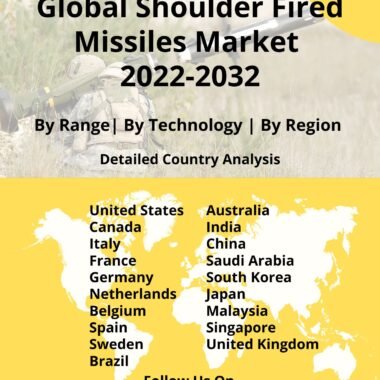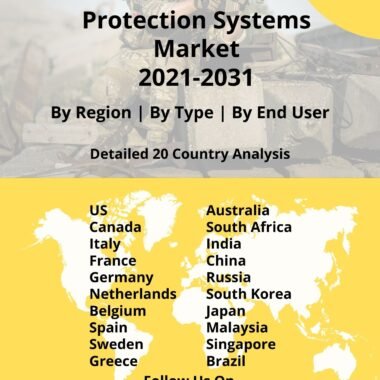Description
Tactical Communication In Homeland Security Market
Frequently Asked Questions of Tactical Communication In Homeland Security Market
Tactical communication plays a vital role in homeland security by enabling effective coordination, information sharing, and response during critical incidents. Interoperable communication systems are crucial for enabling coordination among various agencies involved in homeland security, such as law enforcement, emergency services, and government agencies. These systems should support seamless communication and data sharing across different organizations and jurisdictions, regardless of the equipment or technology used. Establishing dedicated communication networks for homeland security can ensure reliable and secure communication during emergencies. These networks can utilize technologies like Land Mobile Radio (LMR), satellite communication, or cellular networks specifically allocated for emergency response and homeland security operations.
Two-way radios remain a primary communication tool for tactical operations in homeland security. Robust and encrypted radio systems allow responders to communicate in real-time, exchange critical information, and coordinate their actions. Specialized radio frequencies may be allocated for homeland security purposes to minimize interference and prioritize communication. Mobile data terminals and video communication technologies enable responders to access real-time data, share images or videos, and receive important updates on the field. These capabilities enhance situational awareness, facilitate rapid decision-making, and support effective coordination among personnel involved in homeland security operations. Implementing incident command systems (ICS) ensures effective communication and coordination during large-scale incidents. ICS establishes a standardized structure for command, control, and information flow among responders, enabling seamless communication and unified decision-making.
Major factors driving Tactical Communication In Homeland Security Market Growth
As per counter-drone systems market analysis, there are 2 types of anti-UAS measures, i.e. drone detection, and drone mitigation or interception. Radar, RF sensors, and PTZ cameras are among the drone-detecting methods used to find them. If a drone flies inside the perimeter of a protected area, drone detection will pick it up. Drone mitigation or interception works by physically or technologically impeding drone flight. Examples of drone mitigation technology include security drones, spoofers, nets, and drone jammers. The growing defense budget and the consequent increase in military procurement are expected to be one of the main factors which are poised to affect the market growth for counter-drone systems. It is noted that most economies have invested heavily in attack drones which makes counter-drone systems an equally important military equipment that improves the survivability of personnel as well as armed forces.
Trends Influencing the Tactical Communication In Homeland Security Market Size
Radar and RF detection are the most often used technologies for drone detection. In a range of circumstances, including urban and noisy locations, radar and RF detection can be utilized to enhance airspace security. A multi-layered system that offers users improved coverage and protection can be created using RF and radar in conjunction.
Tactical Communication In Homeland Security Market Forecast & Dynamics
Counter-drone technology is already in use in a variety of military and commercial applications. C-UAS systems are used by the US military for base protection in other countries. The use of portable and mobile systems to protect ground units and convoys is also gaining popularity. Counter-drone technology is already in use in civilian settings in a variety of ways. Airports, stadiums, jails, enterprises, and large events such as the Super Bowl have all deployed C-UAS for airspace protection in the United States. The deployment of drone countermeasures such as signal jammers is restricted in the United States to federal agencies such as the US Department of Defense, Department of Homeland Security, and Department of Justice. In the United States, drone detection countermeasures such as RF and radar are authorized. Because drone detection is allowed, it is a more viable and practical security solution. Drone detection is already being used in several contexts in the United States to improve airspace security and reduce drone hazards.
Tactical Communication In Homeland Security Market Analysis for Recent Developments
A counter-drone system created by the Indian Defence Research and Development Organization (DRDO) has been installed close to the Red Fort area to deal with any impending security threats or drones/kites. This system was developed to counter threats from aerial platforms and unidentified aerial vehicles. The technology can locate and deactivate drones of any size within a 4 km range, according to DRDO officials. The technology is also poised to promote the agenda for indigenous development of technologies thus boosting the growth associated with local sourcing. These anti-drone systems, according to DRDO officials, use a variety of sensors to locate, identify, and track airborne drones. They can share the data with related systems to make countermeasures possible, preventing them from carrying out the planned action (soft killing), and/or destroying them (hard kill). Radars are employed in the drone detection process.
Global tactical communication within homeland security has undergone significant advancements, reflecting a commitment to enhancing the capabilities of security and emergency response agencies. Tactical communication systems play a vital role in ensuring effective coordination, information sharing, and response efforts during critical incidents. Interoperability has become a key focus, with the integration of standards-based communication solutions that enable seamless collaboration among various agencies and jurisdictions. This interoperability ensures that different entities within Homeland Security can communicate efficiently during emergencies, facilitating a coordinated and swift response.
The adoption of advanced technologies, such as secure mobile communication platforms, enhances the mobility and flexibility of tactical communication for security personnel. These technologies enable real-time information exchange, location tracking, and multimedia sharing in the field. Cybersecurity measures have been strengthened to protect sensitive communication channels from potential threats and ensure the integrity and confidentiality of critical information. Encryption, authentication, and secure data transmission protocols are integral components of modern tactical communication systems. Global collaboration and information-sharing initiatives contribute to the development and standardization of tactical communication solutions, fostering a more secure and interconnected approach to homeland security. The ongoing evolution of tactical communication in 2023 underscores the importance of technology in ensuring the effectiveness of security and emergency response operations on a global scale.





